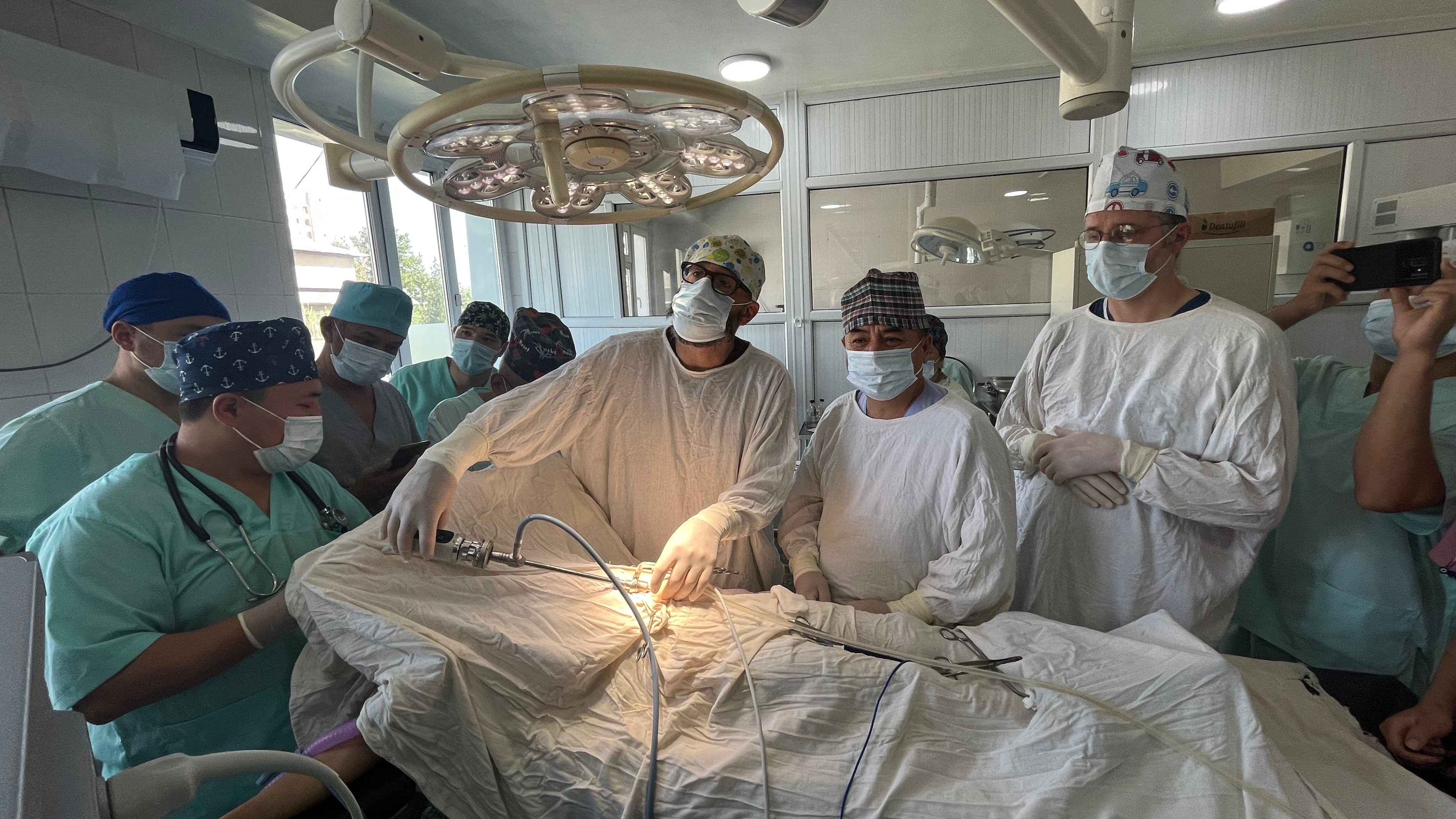
A new project is in prospect. In cooperation with the children's hospital in Osh, we want to help children lead a dignified life and give them new hope.
The purpose of our second stay in Osh, Southern Kyrgyzstan, last September was to conduct a project evaluation. During our first trip together with Yvonne and Marcel Frei, who were able to tell us a lot
about their experiences on site and open the door to the children’s hospital, we had already met the paediatric surgeons. We now wished to define our cooperation more precisely with them. What would be the appropriate disease patterns where a cooperation would be worthwhile and where positive results
could also be expected in the long run both for the young patients and the staff? It was clear to us that we therefore needed to get to know the children’s hospital in Osh even better. However, we did not go there
empty-handed. We took a generator for intraoperative haemostasis and a training and simulation device for laparoscopic procedures with us. On our first trip, we had discovered a tower for minimally invasive surgery in a corner of an operating room that still worked. Unfortunately, there had been no one on site
with the necessary know-how for ten years, so that the frequent appendectomies were performed openly.
To our surprise, however, everything got off to a very quick start. When we arrived in Osh, we were picked up from the airport by the visceral paediatric surgeon and his personal assistant and, after a short refreshment stop at the hotel, taken directly to the new hospital director, who was delighted about our second visit and assured us of his support. Lunch was already prepared in the doctor’s office and had to be eaten quickly because a two-day-old girl with a congenital malformation in the upper gastrointestinal tract (closure of the duodenum) was waiting for surgery. In this case, a tissue cusp had closed the lumen of the intestinal segment. While the Kyrgyz colleague was also very capable of making the correction, we learnt
at this stage where the problems in the treatment of these newborns lay. While at home, such children are kept fasted with a special infusion (parenteral feeding) and receive intensive care until the intestine gets going again, these children are fed intestinally again after just two to three days of fasting, as
there are no such substitute infusions available. The perioperative and postoperative care options are thus just as crucial and almost require more attention at the children’s hospital in Osh. Another important job was therefore to introduce ourselves to the neonatologists and intensive care doctors during the week. After this first operation, further children were examined during the consultations who were scheduled for operations in the coming days and for whom our expertise was required.
The following days were similarly busy to this first one. We were able to see a large number of children during consultations (particularly children with anorectal malformations and spina bifida) and were
involved in many operations. For example, we assisted in a minimally invasive appendectomy and thus brought the laparoscopic tower back to life. Our laparoscopy trainer will provide the team with the necessary skills.
We were particularly pleased that all the paediatric surgical department heads accepted our invitation to dinner on the final evening. This second stay came to a happy end when at lunchtime on the final day we went to see the hospital director again and were treated to another meal and bid farewell with Kyrgyz gifts. Altogether, we consider this stay to have been a successful one, as it enabled us to strengthen the basis
for our cooperation and gain a better insight into the children’s hospital in Osh.
